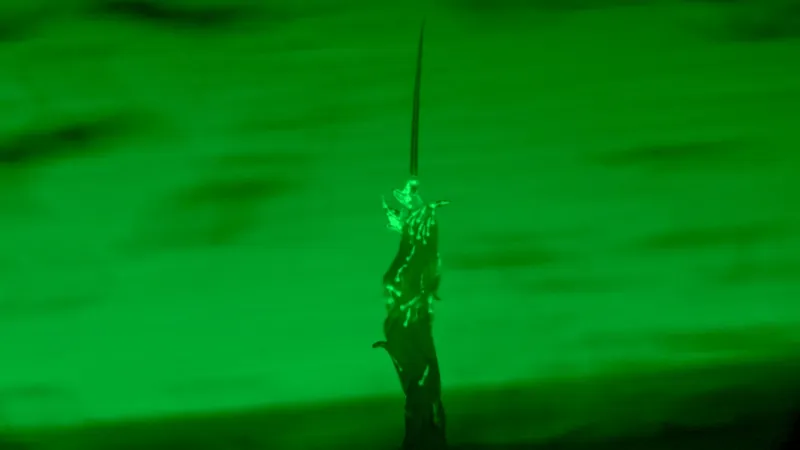
Revolutionary Model from MSU Unveils Secrets of Solar Storms and Space Weather
2025-01-17
Author: Siti
Groundbreaking Research at Michigan State University
In a groundbreaking study, a team of researchers led by Thomas Do at Michigan State University (MSU) has made significant strides in understanding solar storms and their implications for space weather. The sun, a seething sphere of hot gas primarily composed of hydrogen and helium, reaches extreme temperatures ranging from 10,000 to 3.6 million degrees Fahrenheit. This intense heat leads to the continuous release of plasma into space, known as solar wind, which consists of charged particles like protons and electrons.
Understanding Charged Particle Interactions
Understanding how these charged particles interact with sudden energy bursts from the sun is essential for studying cosmic phenomena, including the cosmic rays emitted by supernovae. Do, an astronomy graduate student, has developed an innovative model that predicts the behavior of these particles more comprehensively than any previous frameworks.
Origins of the Research
The roots of this research can be traced back three years when Do began exploring the acceleration of charged particles during his undergraduate project at the Harvard-Smithsonian Center for Astrophysics. His focus was on coronal mass ejections—massive bursts of solar wind that can generate shock waves powerful enough to influence nearby particles.
Shock Wave Interactions
As these shock waves travel through space, they interact with surrounding charged particles, resulting in energy gains for these particles. “As they fly out from the sun, they interact with charged particles along the way. During those interactions, particles gain energy from the shock wave,” Do explained.
Enhancements to Previous Models
The new model enhances the earlier framework established by physicist Federico Fraschetti in 2021. It expands upon the understanding of how both high-energy and low-energy particles can escape from these shock waves. This was a significant advancement because prior models, developed over 50 years ago, only focused on high-energy particles, neglecting the behavior of lower-energy counterparts.
New Equations and Predictive Capability
The research introduced a set of equations that describe particle acceleration over varying energy levels and predict the quantity of particles that can escape. “We’re trying to allow for more particles to escape because we believe that’s more physically realistic,” remarked Do.
Testing the Model During Solar Maximum
As fate would have it, the team had the perfect opportunity to test their model when the sun reached its solar maximum—a period of heightened solar activity in its 11-year cycle. On September 5, 2022, an explosive solar event occurred while NASA's Parker Solar Probe was on a close pass to the sun, offering a treasure trove of data regarding particle speed and temperature as the shock wave hit the probe.
Validating Results with Parker Solar Probe
“This is one of the events that Parker Solar Probe was designed to measure,” Fraschetti noted. The proximity of the probe allowed the researchers to analyze particle behaviors that had just encountered shock waves, providing a clearer picture of the acceleration process.
Remarkable Findings
The results were remarkable; data from the Parker Solar Probe aligned closely with their model's predictions, confirming the validity of their approach. “The model showed excellent agreement with the data and confirmed that our physical expectation of what happens to young shock waves close to the sun is correct,” Fraschetti stated.
Implications for Space Research
This revolutionary model not only deepens our understanding of solar storms but also has potential applications in various fields of space research involving charged particles. As researchers continue to study and prepare for the sun's unpredictable activity, this breakthrough provides vital insights into safeguarding technology and infrastructure on Earth that can be affected by space weather.
Conclusion
MSU's commitment to advancing human knowledge continues to shine brightly, as students like Thomas Do push the boundaries of discovery in astrophysics and beyond. Stay tuned as we uncover more about this riveting discovery and its implications for our understanding of the universe!




 Brasil (PT)
Brasil (PT)
 Canada (EN)
Canada (EN)
 Chile (ES)
Chile (ES)
 Česko (CS)
Česko (CS)
 대한민국 (KO)
대한민국 (KO)
 España (ES)
España (ES)
 France (FR)
France (FR)
 Hong Kong (EN)
Hong Kong (EN)
 Italia (IT)
Italia (IT)
 日本 (JA)
日本 (JA)
 Magyarország (HU)
Magyarország (HU)
 Norge (NO)
Norge (NO)
 Polska (PL)
Polska (PL)
 Schweiz (DE)
Schweiz (DE)
 Singapore (EN)
Singapore (EN)
 Sverige (SV)
Sverige (SV)
 Suomi (FI)
Suomi (FI)
 Türkiye (TR)
Türkiye (TR)
 الإمارات العربية المتحدة (AR)
الإمارات العربية المتحدة (AR)